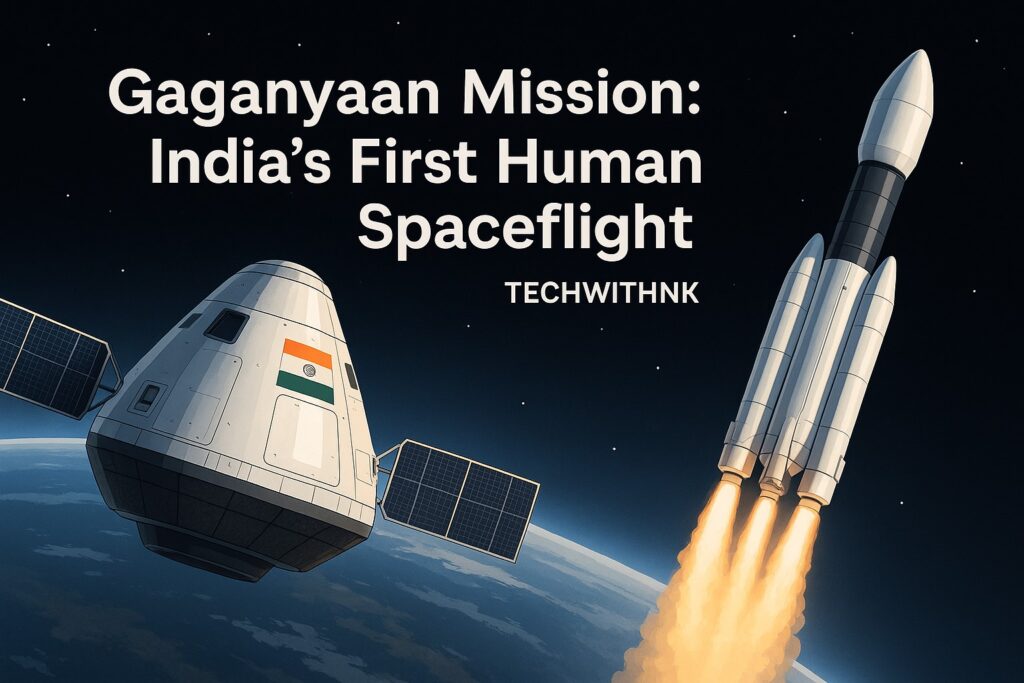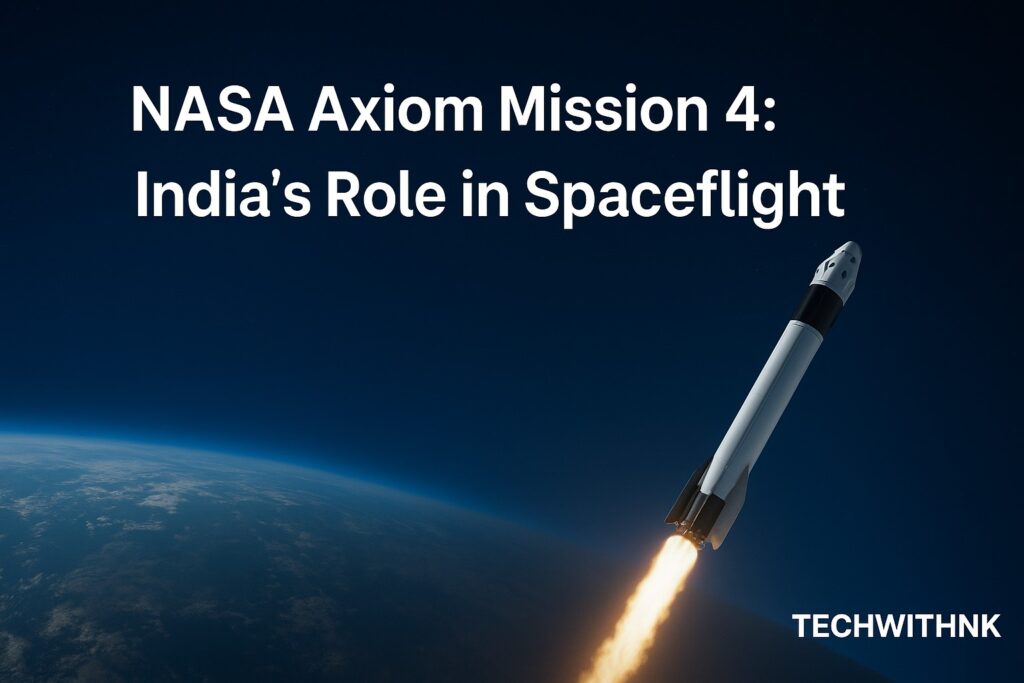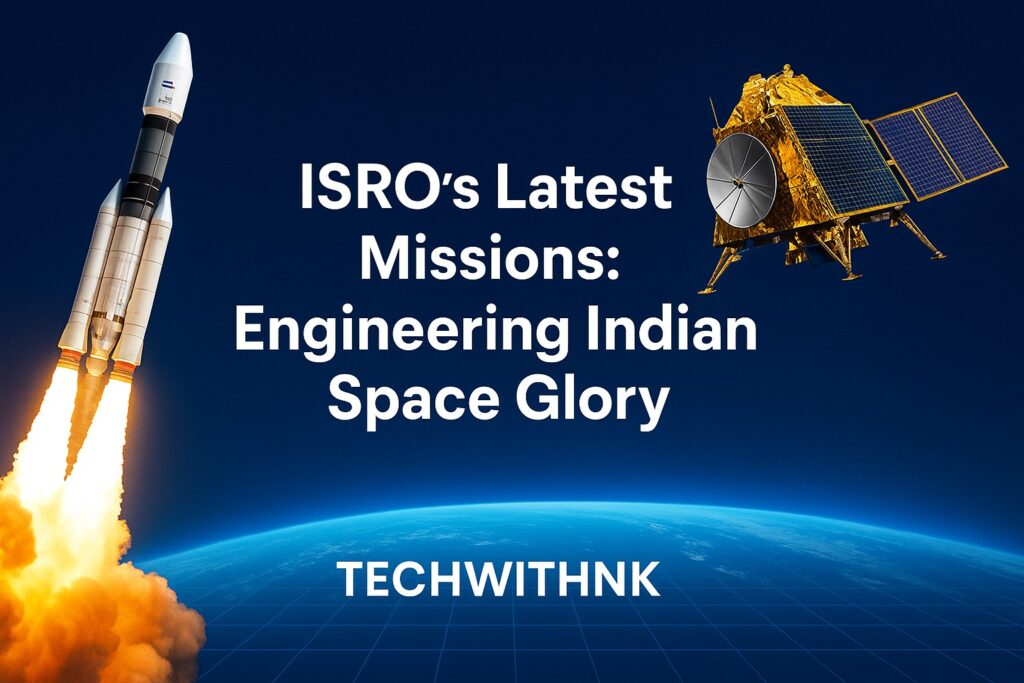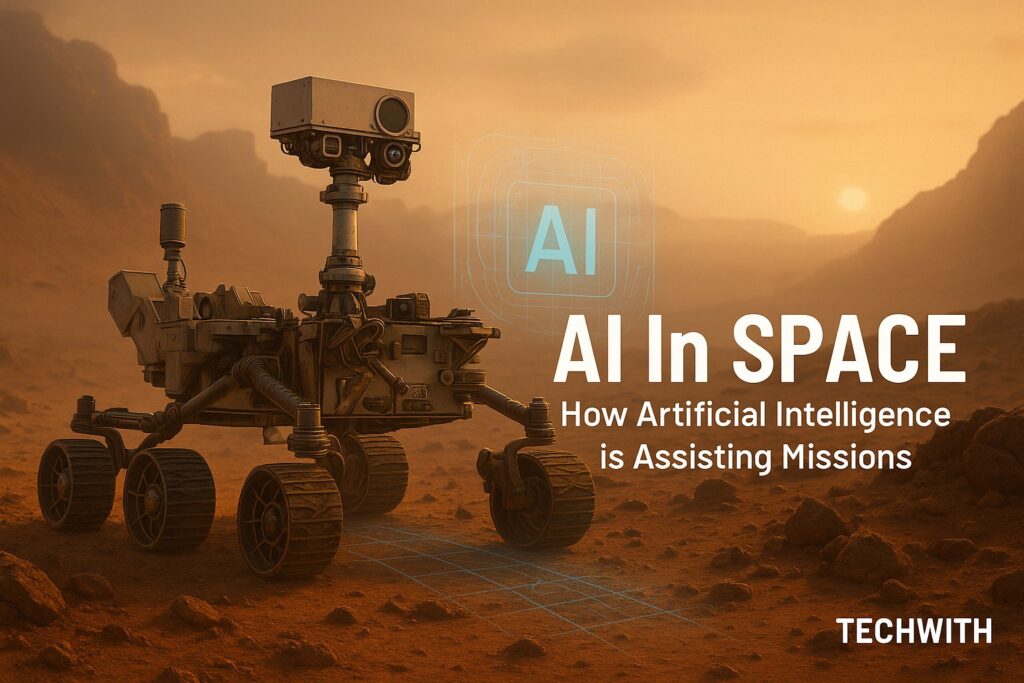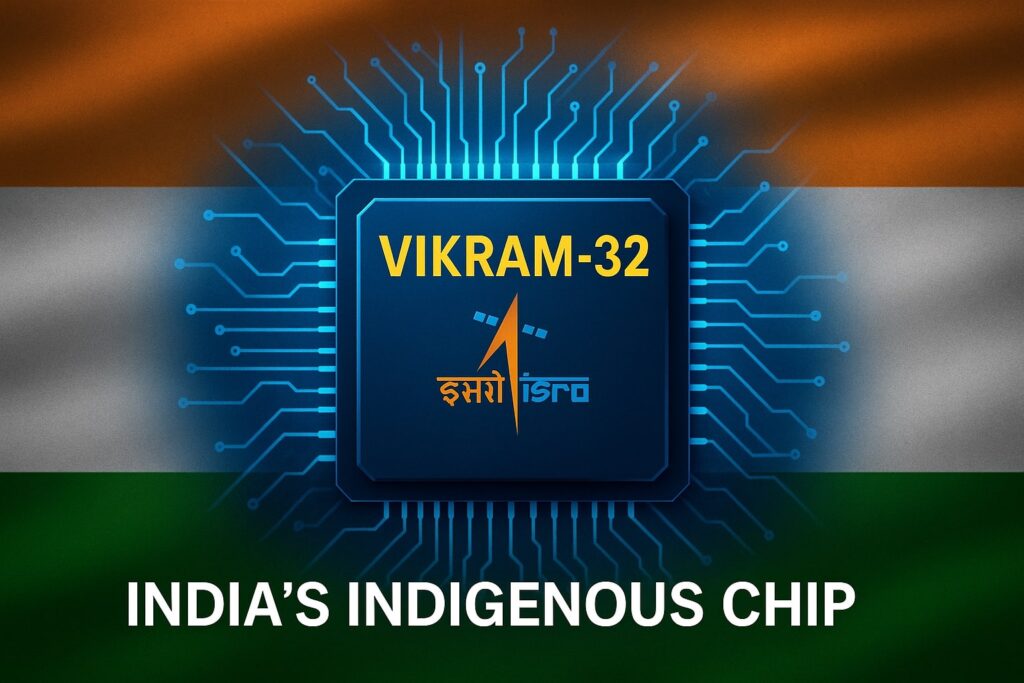“A journey of a thousand miles begins with a single step. For India, that step is Gaganyaan.”
When the Indian Space Research Organisation (ISRO) first revealed its plans to send an Indian citizen into space on an Indian rocket from Indian soil, it ignited the dreams of millions. This mission — named Gaganyaan, literally “Sky Vehicle” in Sanskrit — is a bold demonstration of India’s growing capabilities in the field of advanced space technology and human spaceflight.
While India has already made its mark with successful interplanetary missions like Chandrayaan and Mangalyaan, Gaganyaan elevates India into the prestigious club of nations capable of human space travel, joining the ranks of Russia, the United States, and China. Let’s dive deep into this incredible mission, exploring its origins, objectives, technical details, challenges, and why it matters so profoundly for India’s future.
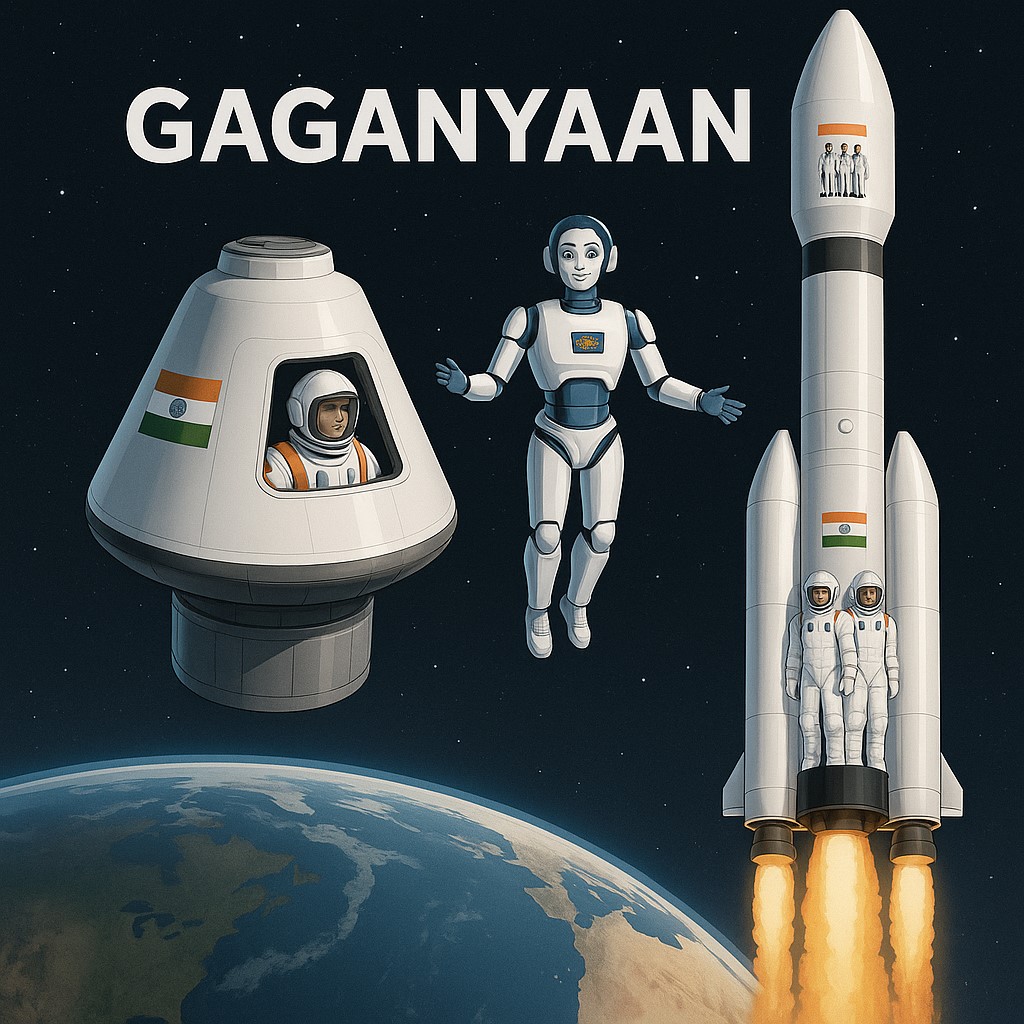
Table of Contents
ToggleThe Genesis of Gaganyaan
The dream of human spaceflight has been present in India since the very birth of its space program in the 1960s. Visionaries like Dr. Vikram Sarabhai had long imagined India developing indigenous human spaceflight capabilities.
However, due to financial, technological, and geopolitical limitations, the idea was shelved for decades. ISRO focused on more pragmatic applications, like communication satellites, remote sensing, and weather monitoring, which yielded enormous benefits for India’s socioeconomic growth.
After the resounding success of Chandrayaan-1 in 2008 and Mangalyaan in 2013, ISRO’s confidence surged. These missions proved India’s ability to develop sophisticated launch systems, autonomous spacecraft, and mission-critical operations on a shoestring budget. Building on that momentum, in August 2018, the Prime Minister of India officially announced the Gaganyaan program, setting the ambitious goal of sending an Indian astronaut to space before the 75th anniversary of India’s independence.
The mission has since evolved into a multi-phase program, featuring uncrewed demonstration flights, technology demonstrations, and, finally, a fully crewed mission.
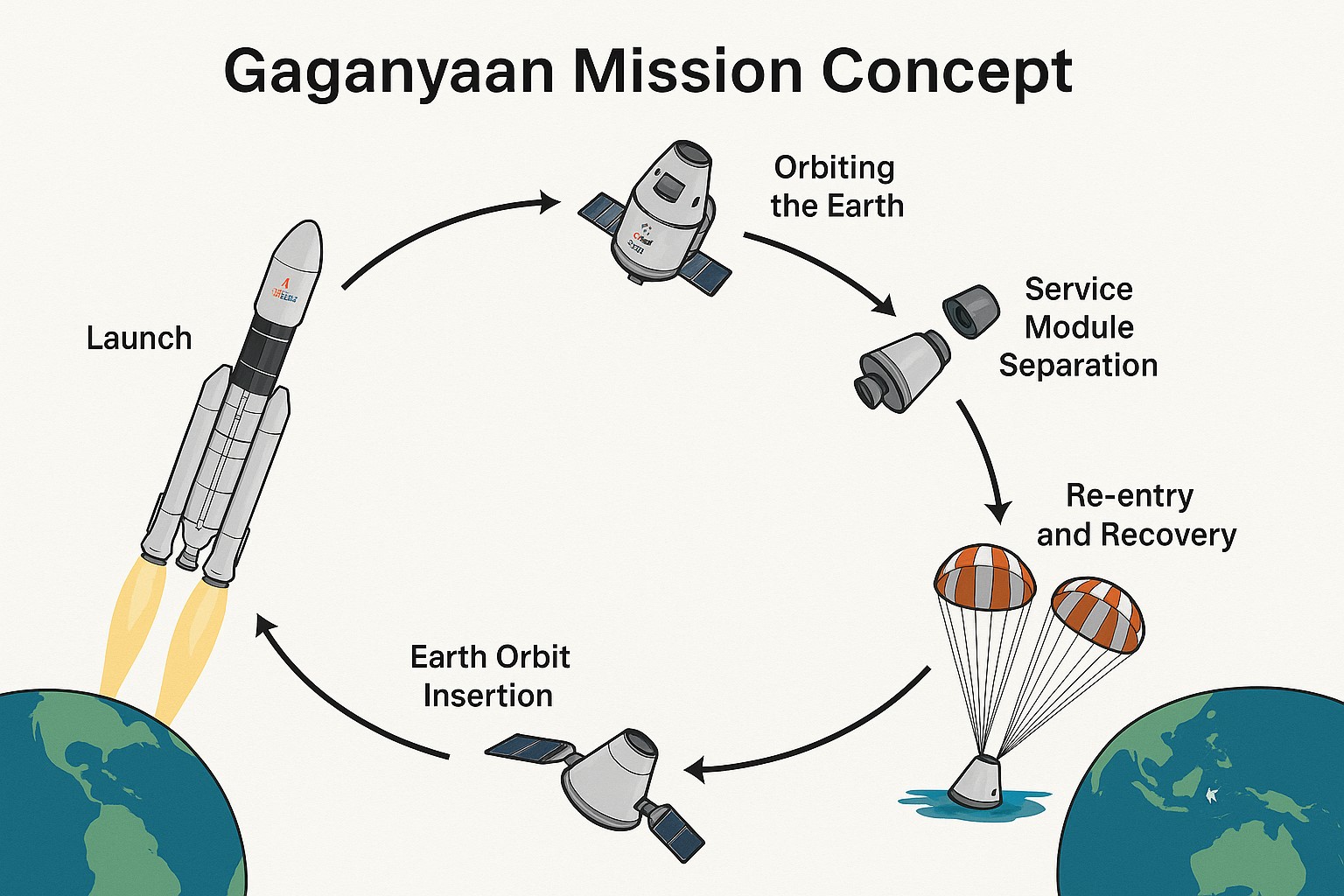
The Vision and Objectives of Gaganyaan
Gaganyaan is far more than a technological achievement; it is a national statement. Here are its key objectives:
Human-Rated Spacecraft: Develop a reliable, safe, and reusable crewed spacecraft.
Launch Indigenous Astronauts: Launch at least one Indian astronaut into low-Earth orbit (LEO).
Develop Human-Support Systems: Master life support, crew escape, environmental control, and orbital recovery systems.
Establish India as a Space Superpower: Cement India’s place in the global human spaceflight club.
Foster International Collaboration: Partner with other agencies (e.g., Roscosmos, CNES) for training and knowledge sharing.
Spin-Off Technologies: Enable broader innovations for defense, medical technology, robotics, and materials science.
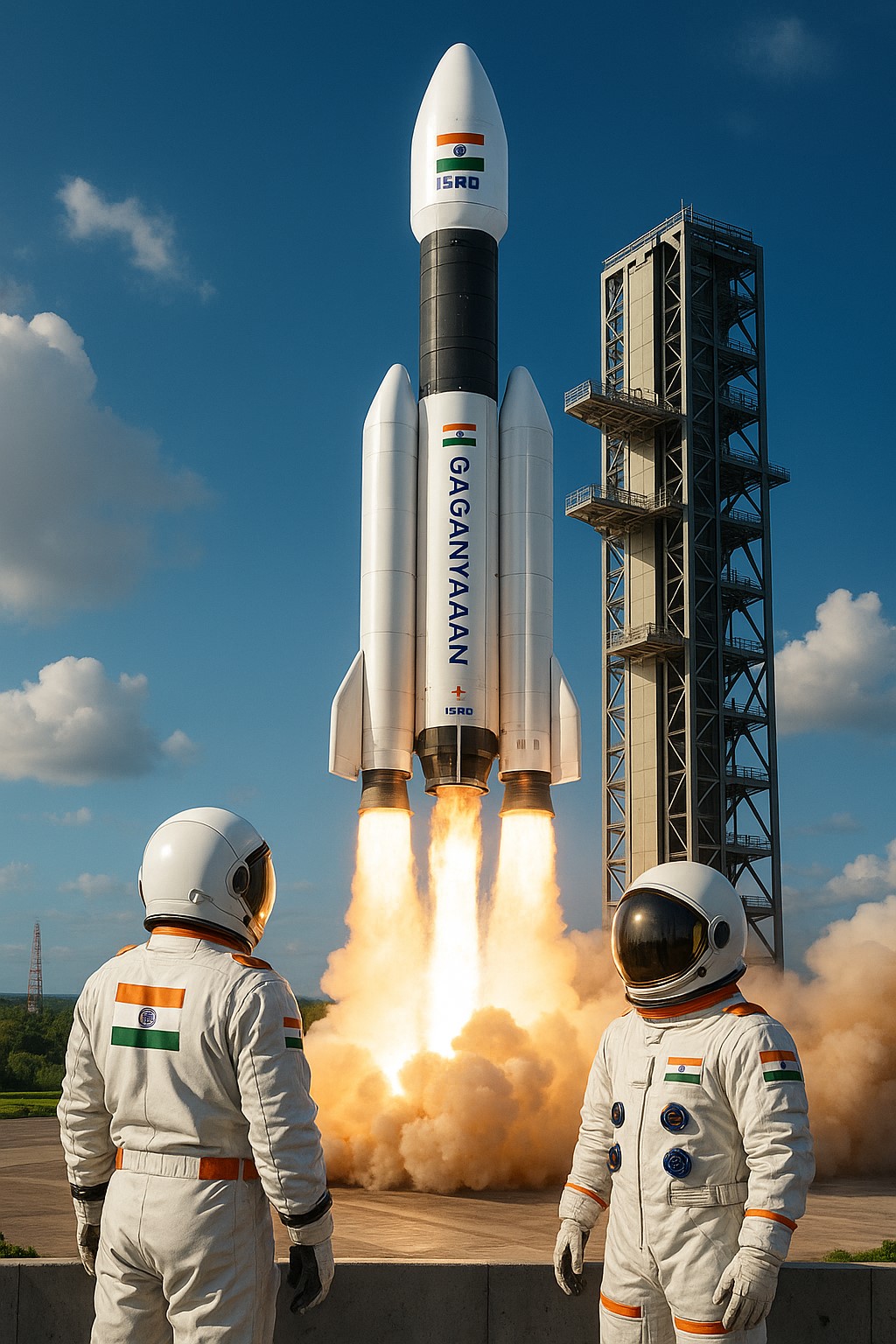
Gaganyaan Mission Timeline
The Gaganyaan mission is structured in phases. As of mid-2025, here is the timeline:
Gaganyaan-1 (Uncrewed Test Flight)
Planned for December 2025
Will carry Vyommitra, a female humanoid robot developed by ISRO, to simulate crew operations.
Gaganyaan-2 (Second Uncrewed Flight)
Planned for mid-2026
Additional tests of life support, environmental controls, and re-entry performance.
Gaganyaan-3 (Third Uncrewed Flight, optional)
May happen in late 2026 if ISRO requires more validation.
Gaganyaan-4 (First Crewed Flight)
Currently targeted for early 2027
Will carry 2–3 astronauts for up to 7 days in orbit at around 400 km altitude.
These dates have shifted over time due to COVID-19, global supply chain delays, and the priority of ensuring astronaut safety — a non-negotiable standard for any human spaceflight program.
CLICK HERE TO GO ISRO GAGANYAAN
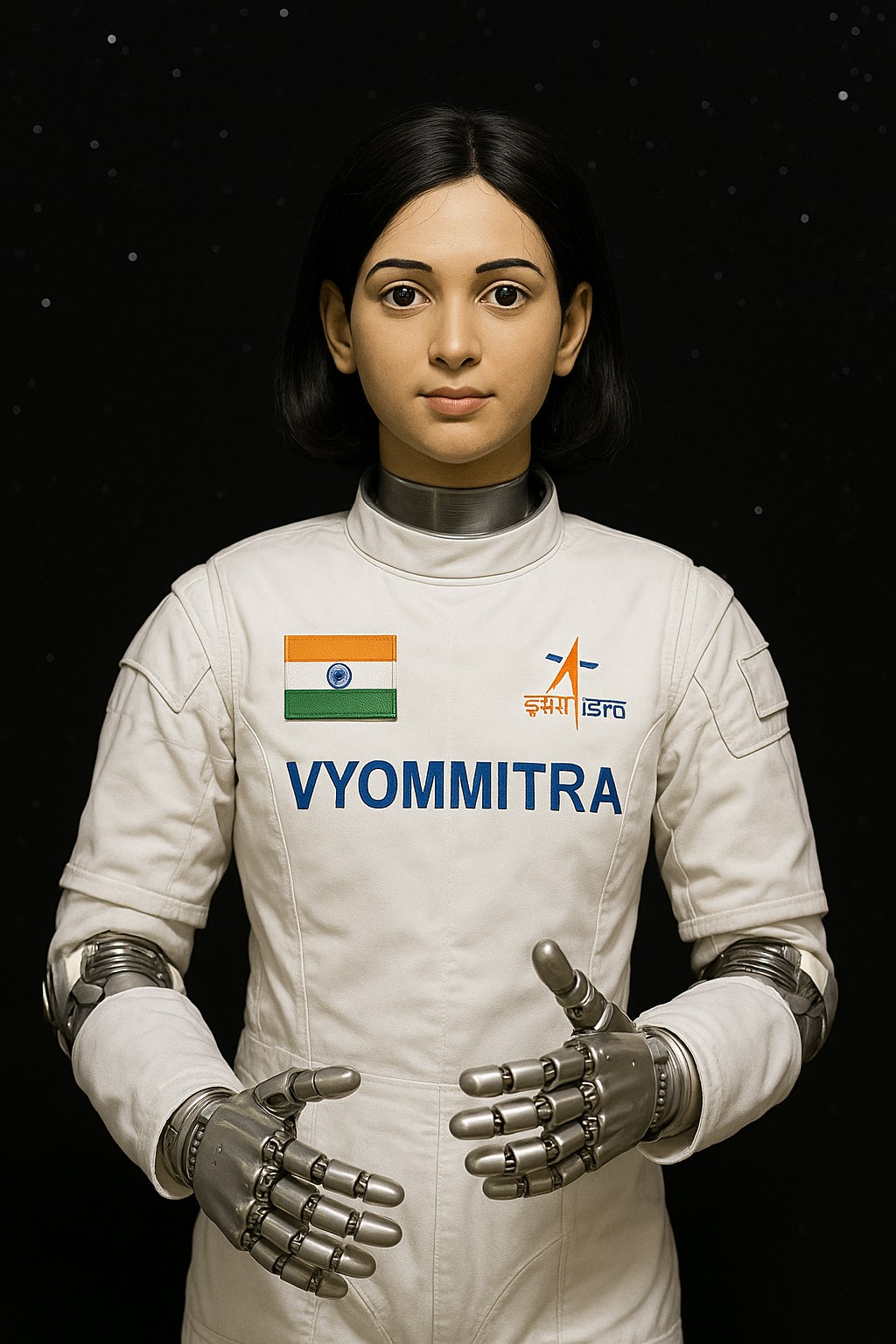
Meet Vyommitra: ISRO’s Space Humanoid
An interesting highlight of the Gaganyaan program is Vyommitra, a half-humanoid robot who will be onboard the uncrewed test flights. Vyommitra can:
Simulate crew responses
Communicate with ground control
Perform switch operations
Monitor environmental systems
Give feedback on life-support systems
Vyommitra acts as a stand-in for astronauts, allowing ISRO to test crew interfaces without risking human lives in early trials.
Astronaut Training: India’s New Space Heroes
Four IAF (Indian Air Force) test pilots have been selected for astronaut training, in partnership with Russia’s Gagarin Cosmonaut Training Center. Their program includes:
Physical conditioning
Survival training
Microgravity familiarization
Spaceflight medical exams
Advanced spacecraft system training
After Russia’s initial phase of training, these astronauts will continue preparation at the new Astronaut Training Facility in Bengaluru, featuring centrifuges, neutral buoyancy pools, and simulators built specifically for the Gaganyaan capsule.
The lead astronaut currently designated is Group Captain Shubhanshu Shukla, who is expected to be on the first crew mission, along with two colleagues yet to be officially named.
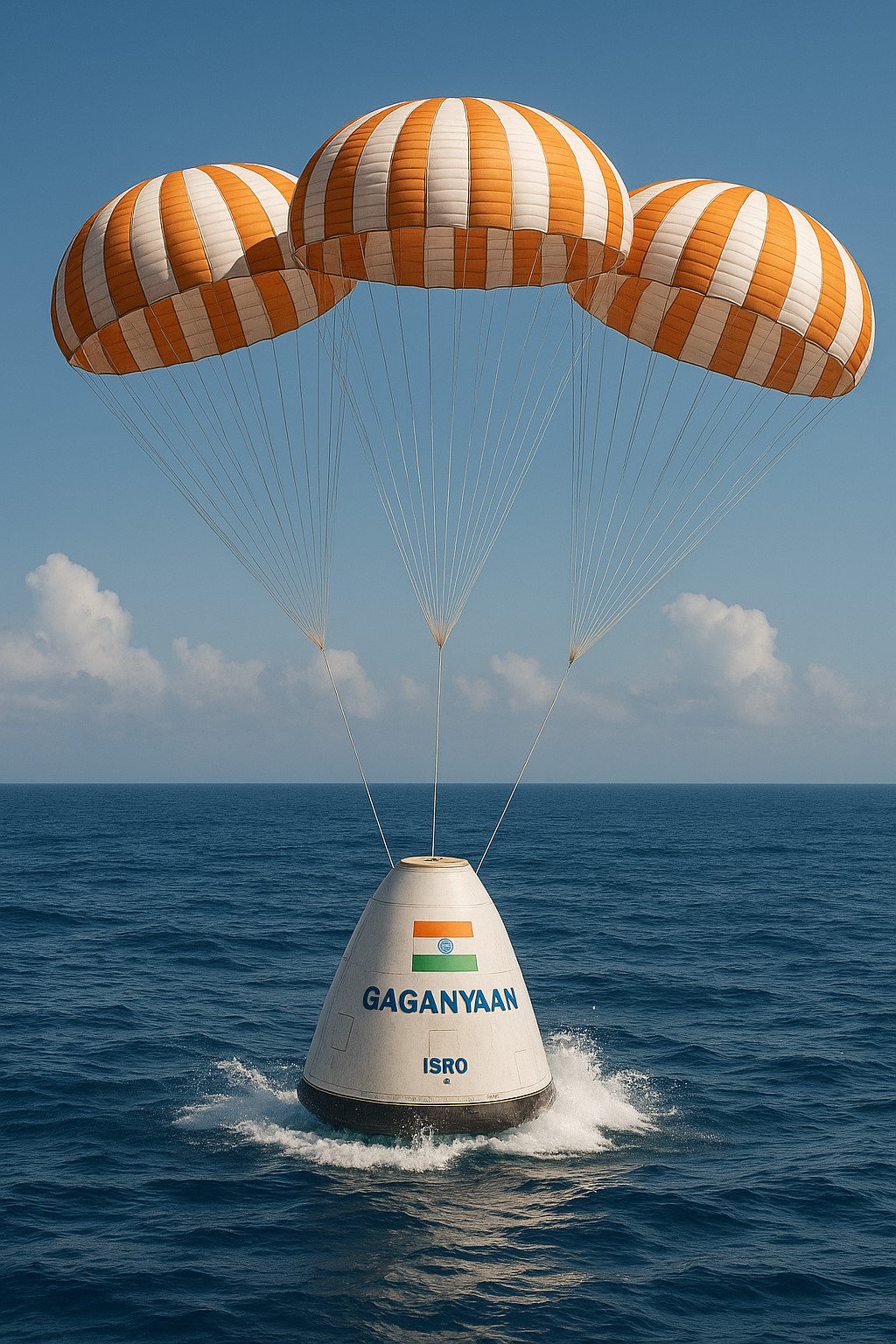
The Crew Module: Engineering Marvel
The heart of Gaganyaan is its Crew Module (CM). It resembles an Apollo-style capsule, with modern upgrades. Key features include:
Supports 2–3 astronauts
Weighs about 5.3 tons
Equipped with advanced avionics and control systems
Includes life-support, temperature control, and pressure regulation
Contains a heat shield to survive re-entry temperatures of over 1600°C
Has a launch escape system (LES) for crew safety in emergencies
The CM is designed to orbit around 400 km, with a 7-day maximum mission duration. It will return to Earth via parachute-assisted splashdown in the Arabian Sea.
The Service Module
The Service Module (SM) houses the propulsion, power, and support systems for the crew module, including:
Bipropellant engines
Solar arrays for power
Environmental support
Reaction control thrusters
Together, the CM + SM make up the Orbital Module. Once the mission ends, the Service Module is discarded before re-entry.
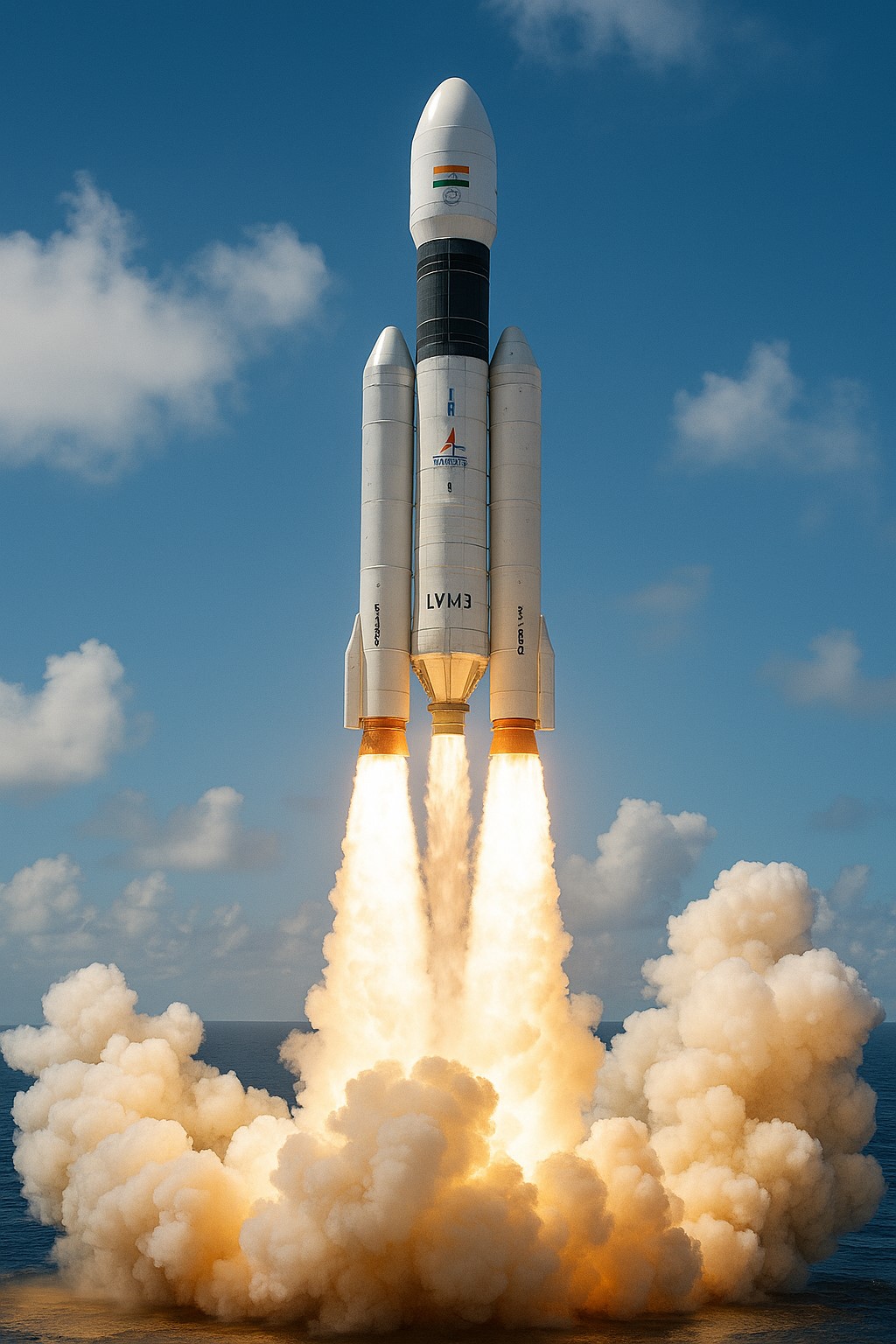
The Launcher: Human-Rated LVM3
Gaganyaan will launch atop ISRO’s modified LVM3 (formerly GSLV Mk III), human-rated to meet international crew safety standards. Modifications include:
Advanced fault-detection systems
Redundant avionics
Strengthened structural components
Abort capability at multiple stages
The LVM3 is ISRO’s most powerful rocket, capable of lifting 8–10 tons to low-Earth orbit — more than sufficient for Gaganyaan’s 8-ton payload.
Crew Escape System (CES): Safety First
One of the riskiest moments of spaceflight is launch. Gaganyaan features a robust Crew Escape System that can pull the crew module away from the launcher within milliseconds if a failure occurs.
This system was successfully tested in 2018 in the Pad Abort Test, and further tests are scheduled before the first crewed mission to validate it at various altitudes and speeds. This safety-first approach is essential for ISRO’s human spaceflight ambitions.
Supporting Infrastructure
To handle a human-rated mission, ISRO is enhancing its facilities:
✅ Upgrading the Satish Dhawan Space Centre (SDSC) at Sriharikota with a new launch complex
✅ Establishing the Astronaut Training Centre in Bengaluru
✅ Developing a mission control system specifically for crewed flights
✅ Coordinating with the Indian Navy for sea recovery operations
International Partnerships
ISRO is not going it alone. Gaganyaan benefits from:
Roscosmos (Russia): Astronaut training, technical consultancy
CNES (France): Environmental control technologies
NASA: Limited knowledge-sharing on crew safety norms
ESA: Potential collaborations on life support and docking
These partnerships show how India is balancing self-reliance with global expertise.
pibus leo.
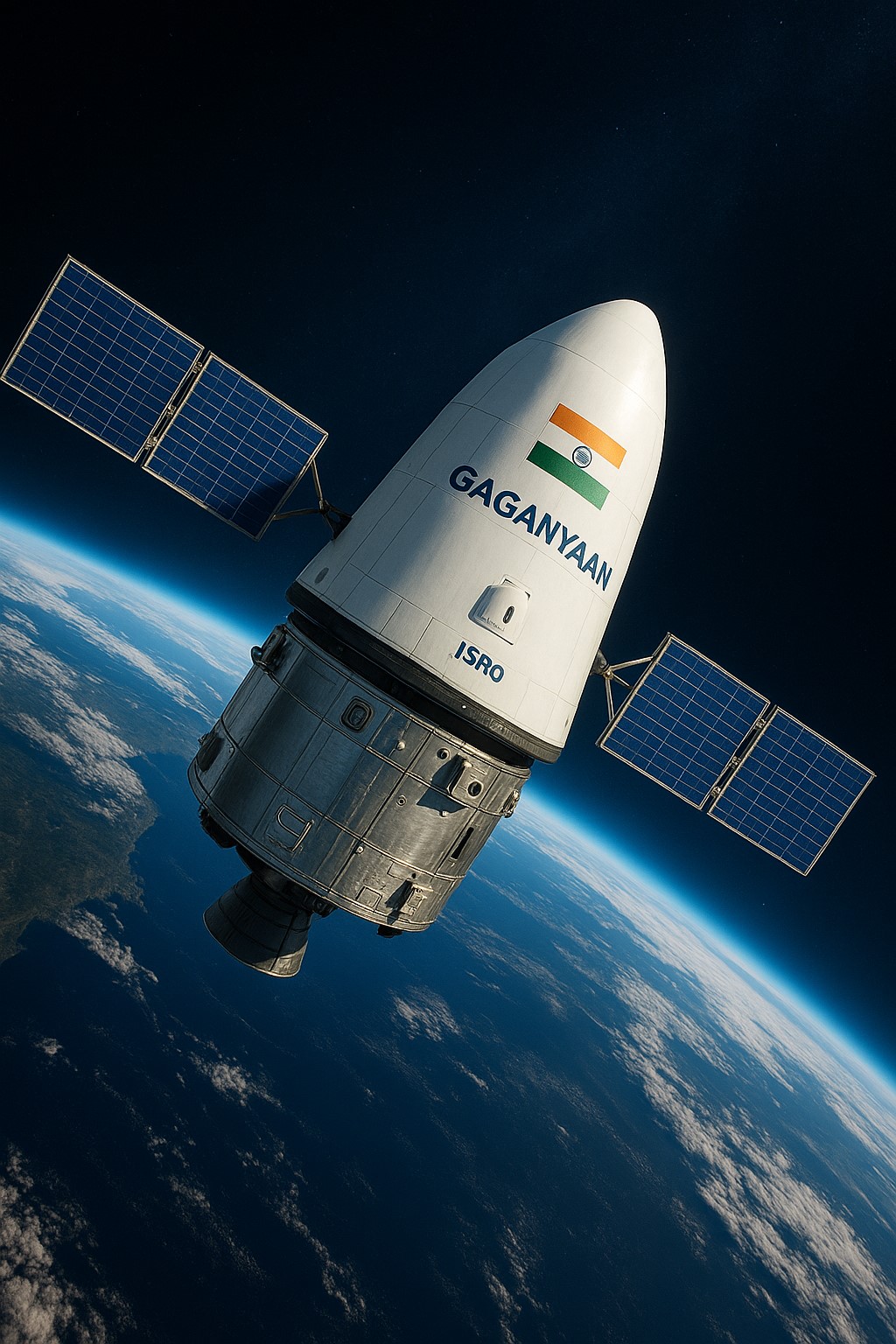
Challenges of Human Spaceflight
Human spaceflight is far more complex than robotic missions. Gaganyaan must overcome:
Life-support validation
Orbital radiation shielding
Reliable launch escape
High-accuracy re-entry and recovery
Human factors engineering (ergonomics, controls, psychological support)
Failures in human spaceflight can have tragic outcomes, so ISRO is approaching Gaganyaan with methodical, step-by-step testing.
Why Gaganyaan Matters
Beyond the technical brilliance, Gaganyaan has huge strategic value:
National pride: Inspires millions of Indians, especially youth, to dream big
Geopolitical standing: Positions India as a major space power
Technological spillover: Innovations in materials, robotics, medicine, and computing
Commercial potential: Establishes India in the global crewed space launch market
Space station ambitions: Gaganyaan paves the way for India’s own planned space station, expected post-2030
What Lies Ahead: India’s Human Spaceflight Roadmap
Gaganyaan is only the beginning. ISRO has plans to:
Launch Chandrayaan-4, a lunar sample return mission
Send an Indian Space Station (Bharatiya Antariksha Station) by 2035
Consider human missions to the Moon in the 2040s
Develop reusable crew launch vehicles in the 2030s
In many ways, Gaganyaan is India’s gateway to long-term deep space exploration.
Conclusion
Gaganyaan is more than a mission; it is a movement. A movement that fuses India’s dreams of self-reliance, scientific advancement, and global leadership. It symbolizes courage, ingenuity, and the confidence to break barriers.
When India finally launches its astronauts aboard Gaganyaan, the world will witness not only the culmination of decades of hard work but also the beginning of a new chapter in humanity’s exploration of the cosmos — with India at its forefront.
As space historian Asif Siddiqi said:
“Putting humans in space is the ultimate expression of a nation’s technological and political maturity.”
Gaganyaan is India’s ultimate expression — its clarion call to the universe
When will Gaganyaan launch?
The first uncrewed test flight of Gaganyaan (Gaganyaan-1) is scheduled for December 2025.
The first crewed mission is targeted for early 2027, after completing two or more uncrewed demonstration flights to ensure astronaut safety.
These dates are subject to change based on test results and safety clearances.
Who are the astronauts on Gaganyaan?
Four Indian Air Force test pilots were chosen as astronaut candidates.
They trained at Russia’s Gagarin Cosmonaut Training Center and are now continuing advanced training in Bengaluru.
Group Captain Shubhanshu Shukla is expected to be one of the first Indian astronauts on Gaganyaan, with two additional crew members yet to be confirmed.
What is Vyommitra?
Vyommitra is a female-looking half-humanoid robot developed by ISRO.
It will be flown on the uncrewed Gaganyaan missions to simulate crew operations, monitor the cabin environment, and interact with mission control.
Vyommitra helps test life-support and safety systems before sending human astronauts.

